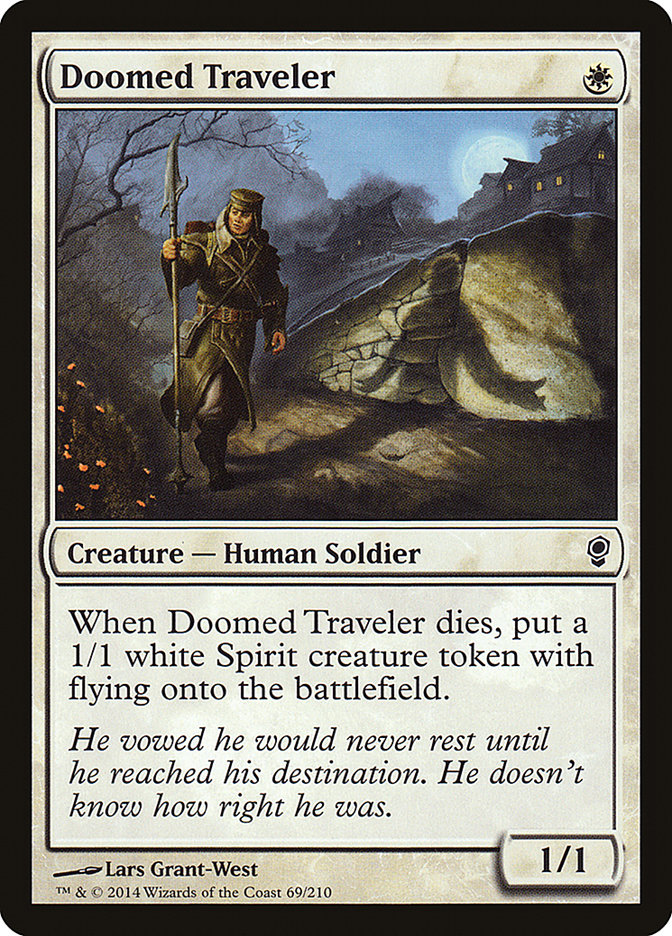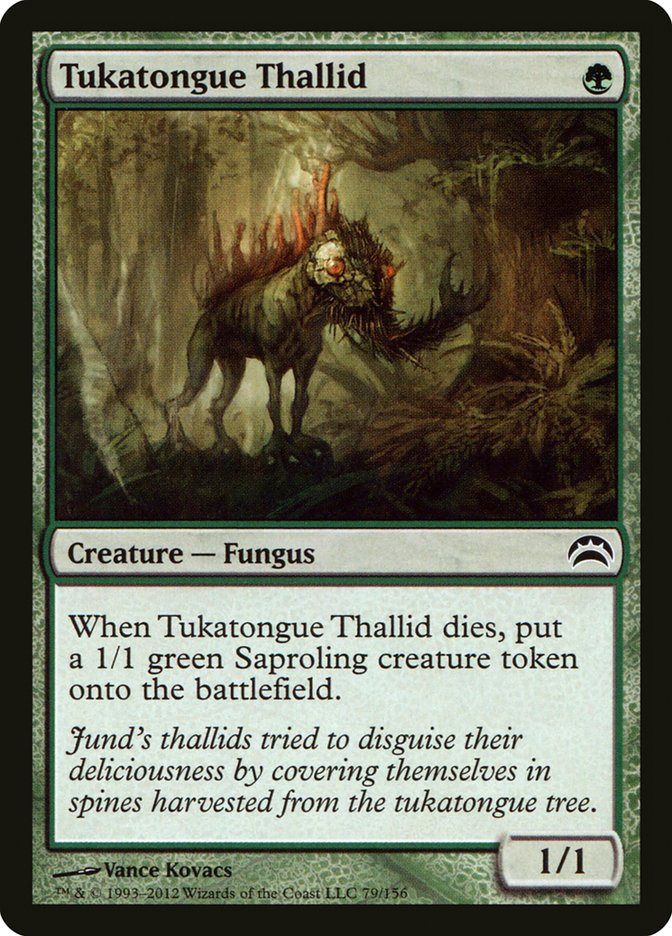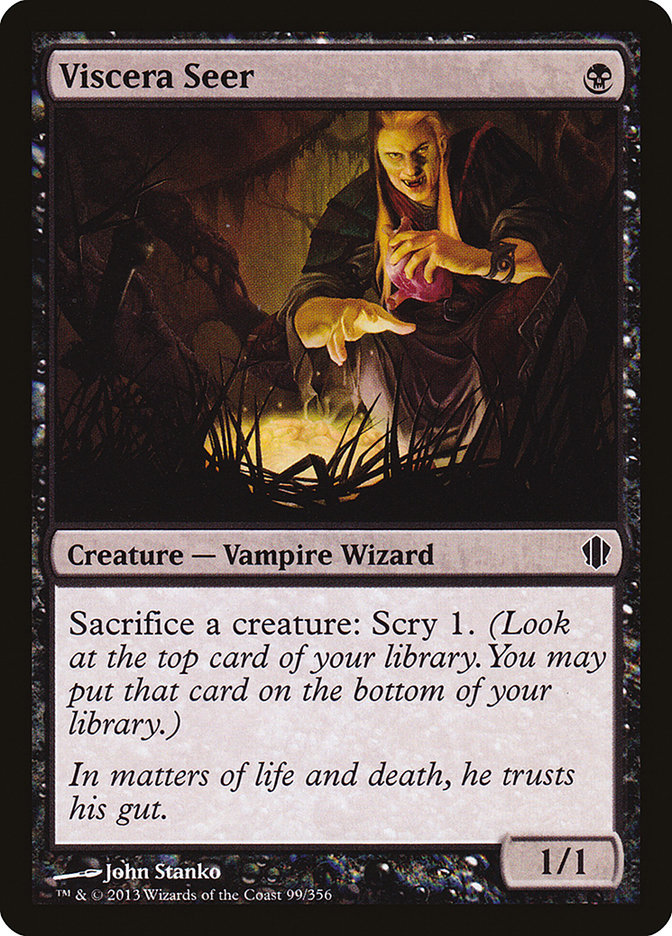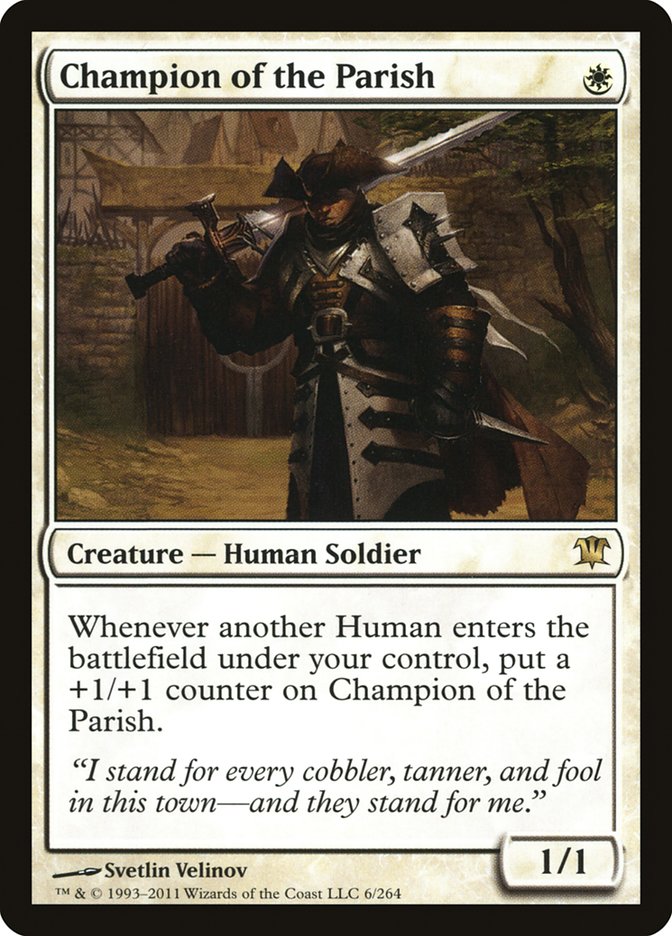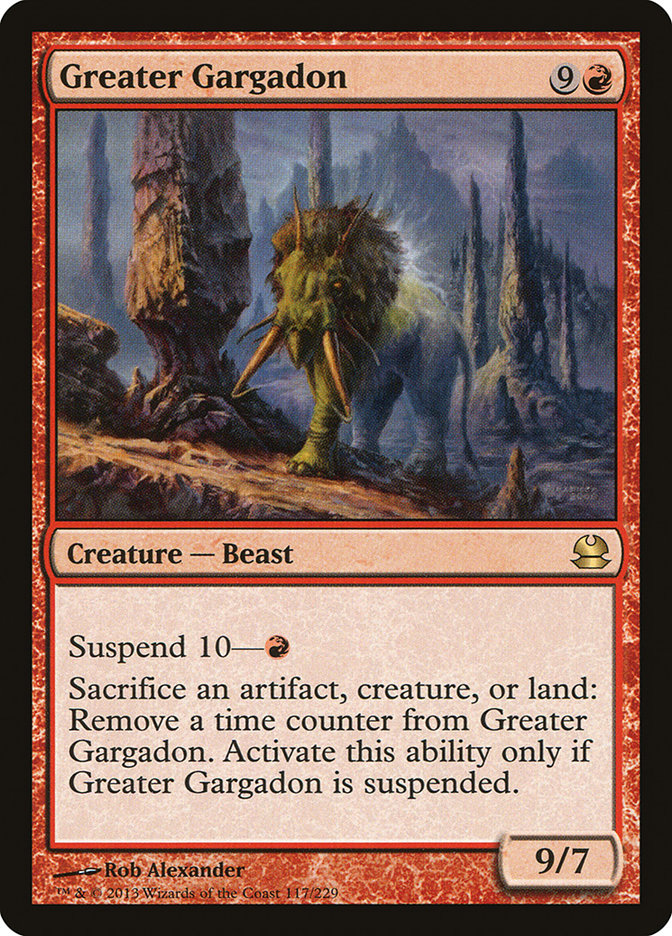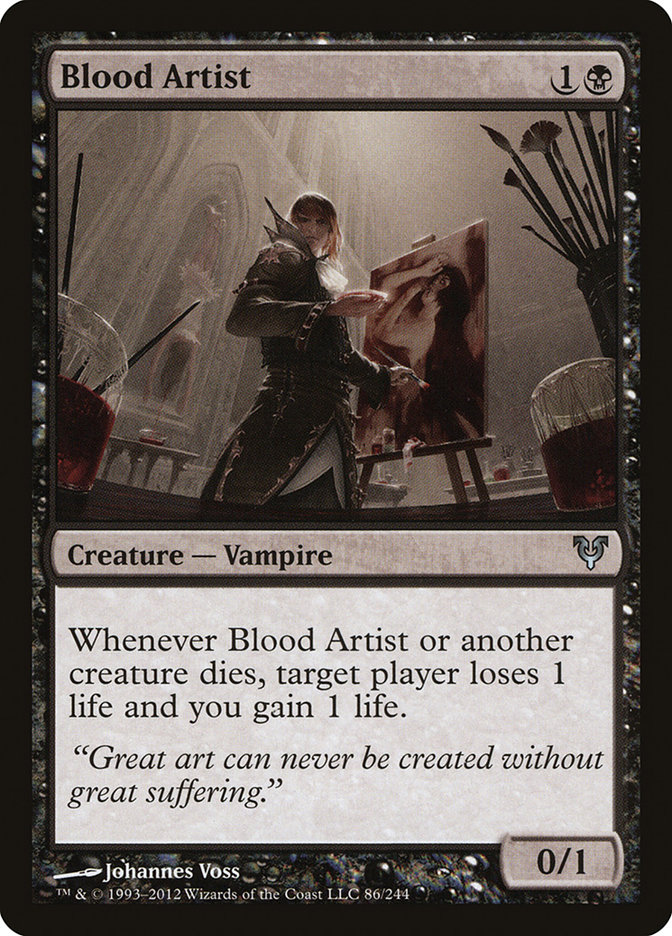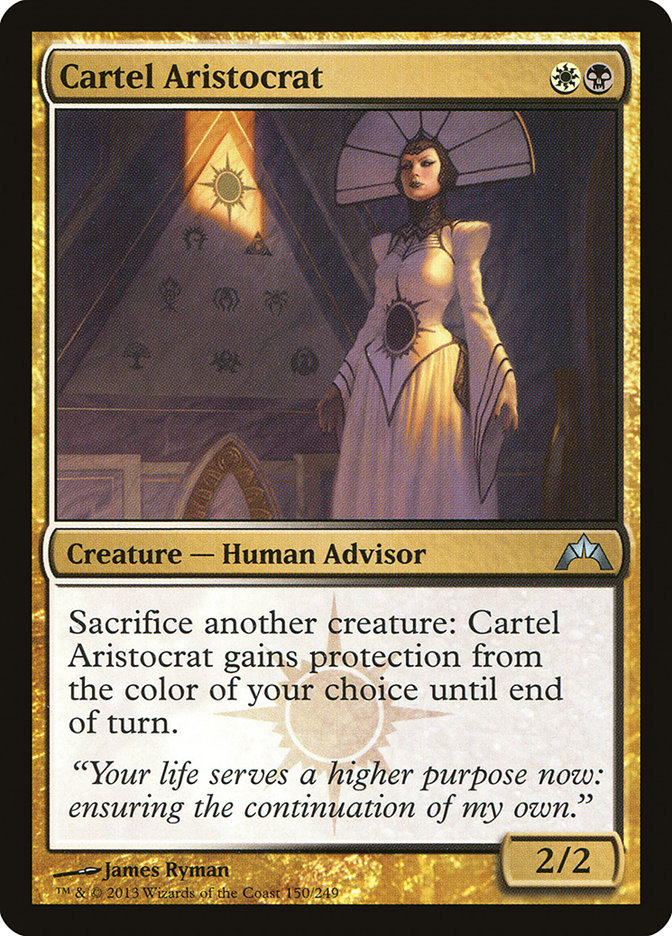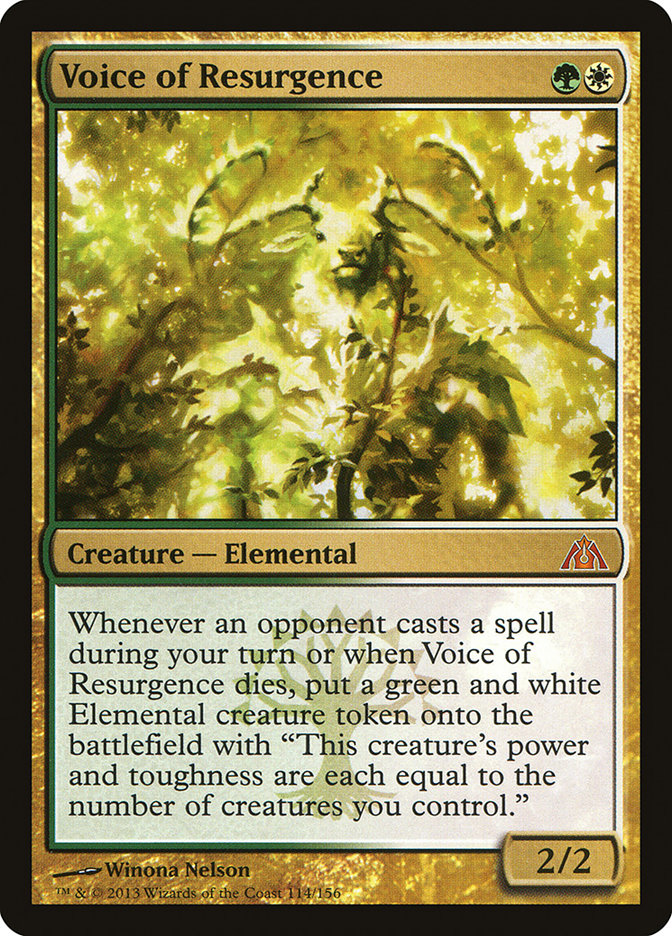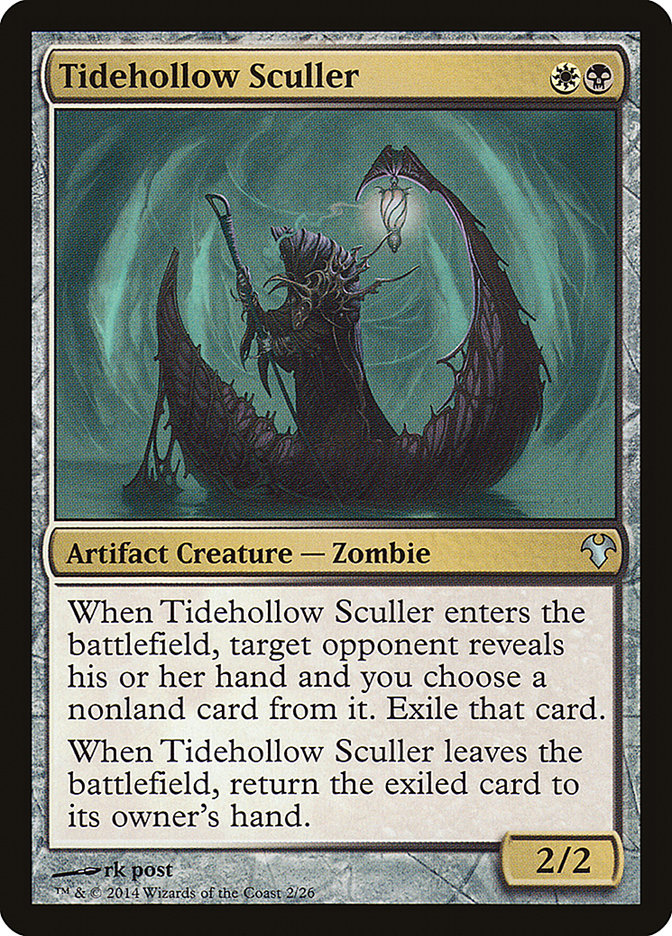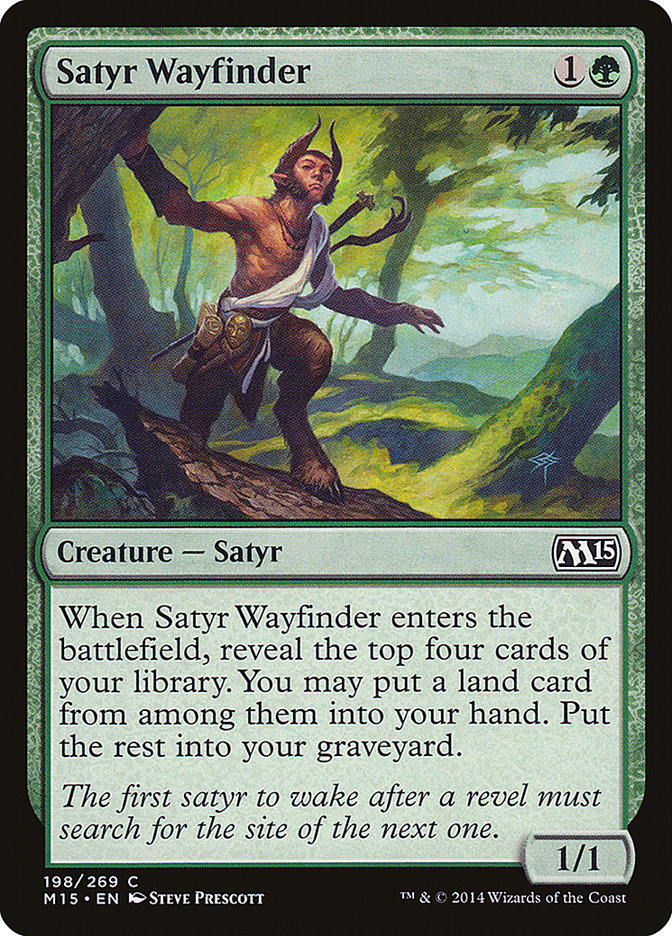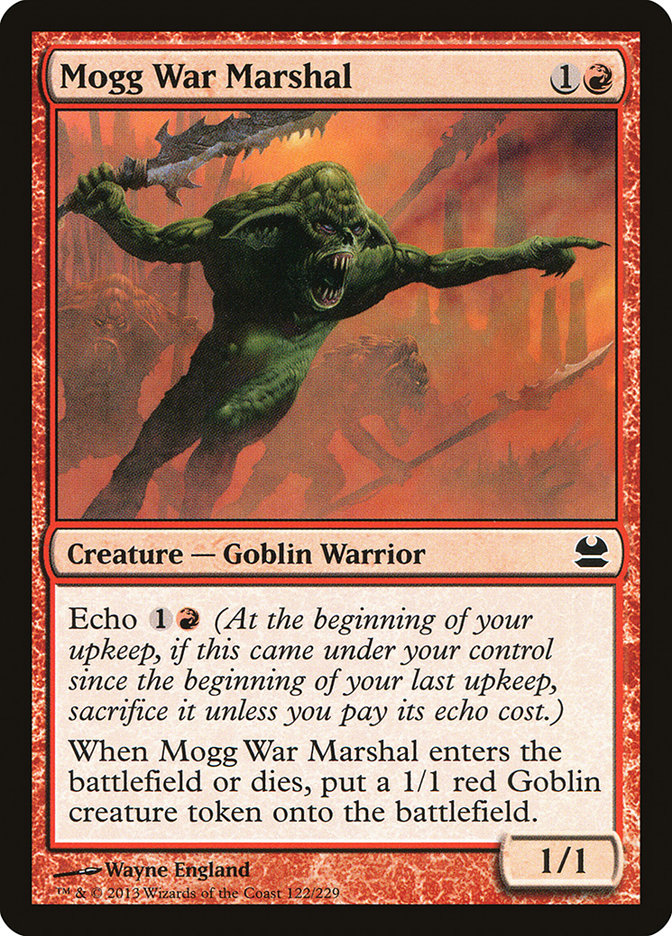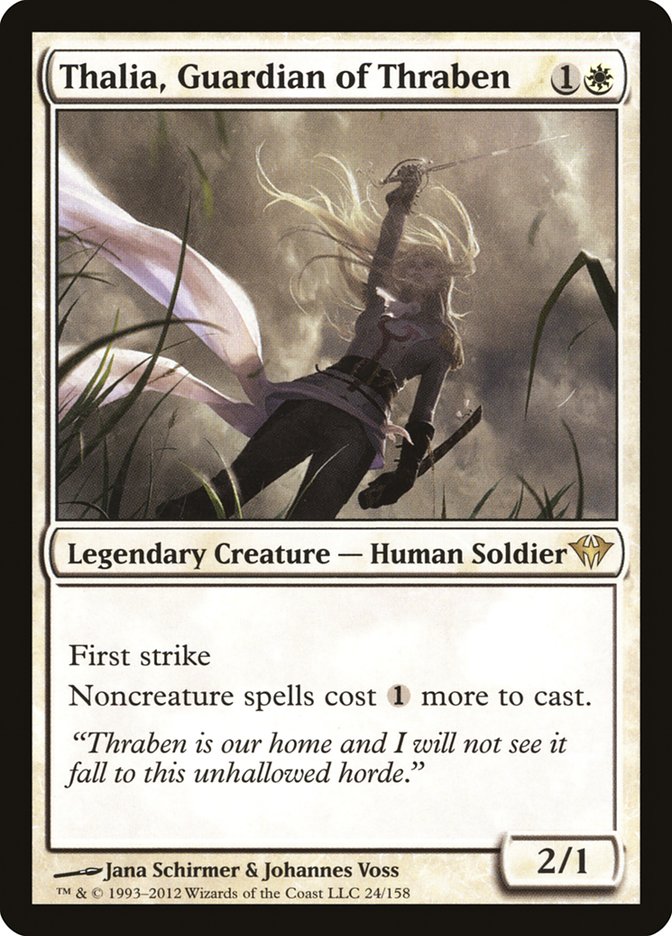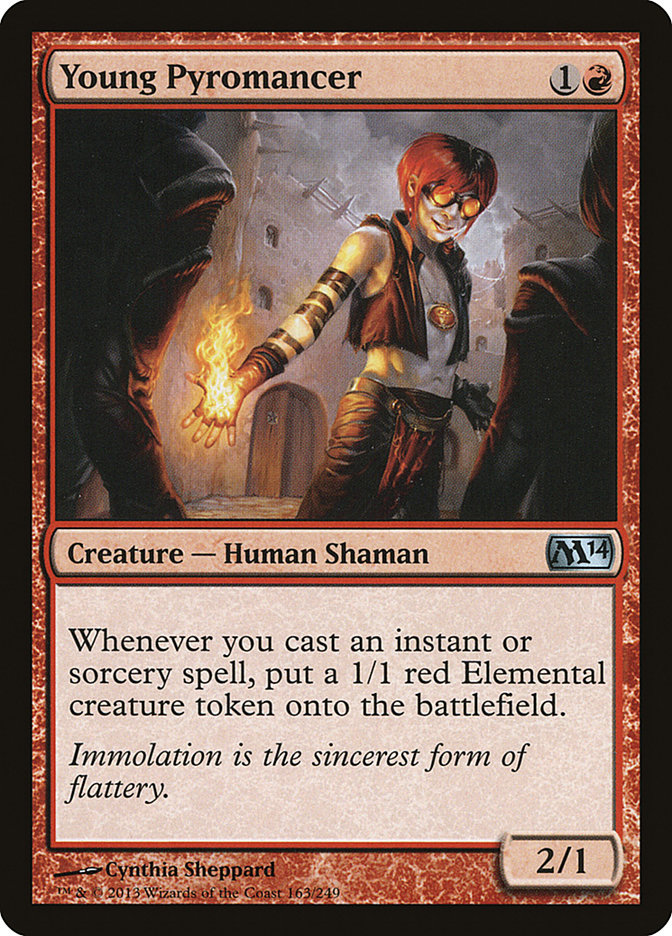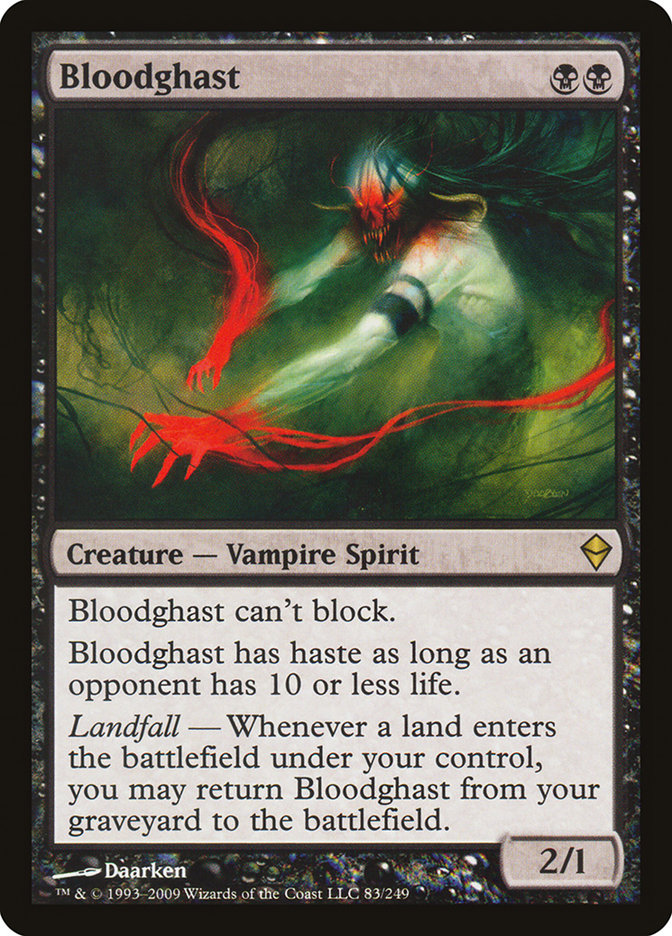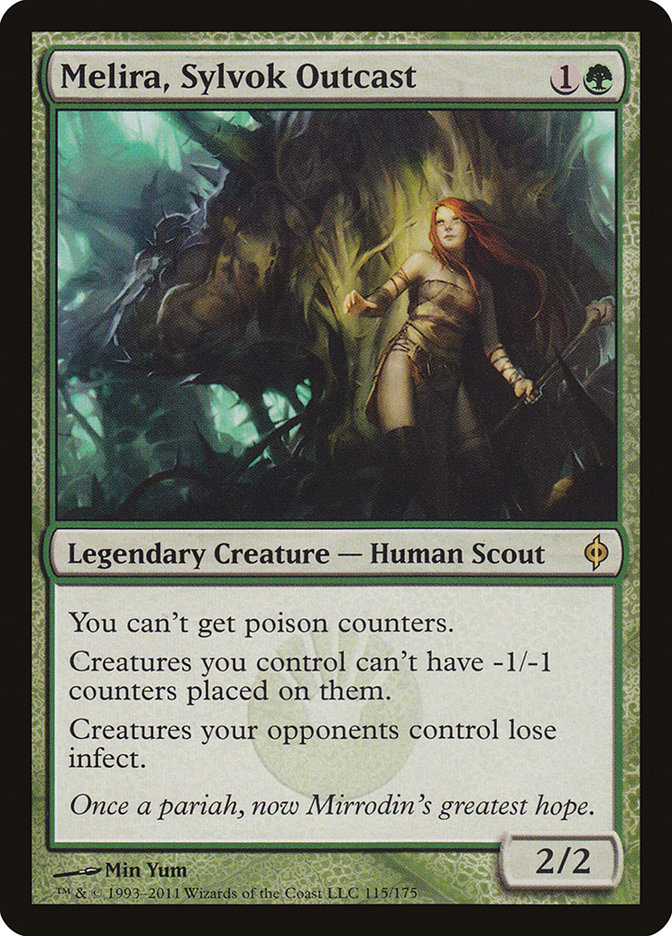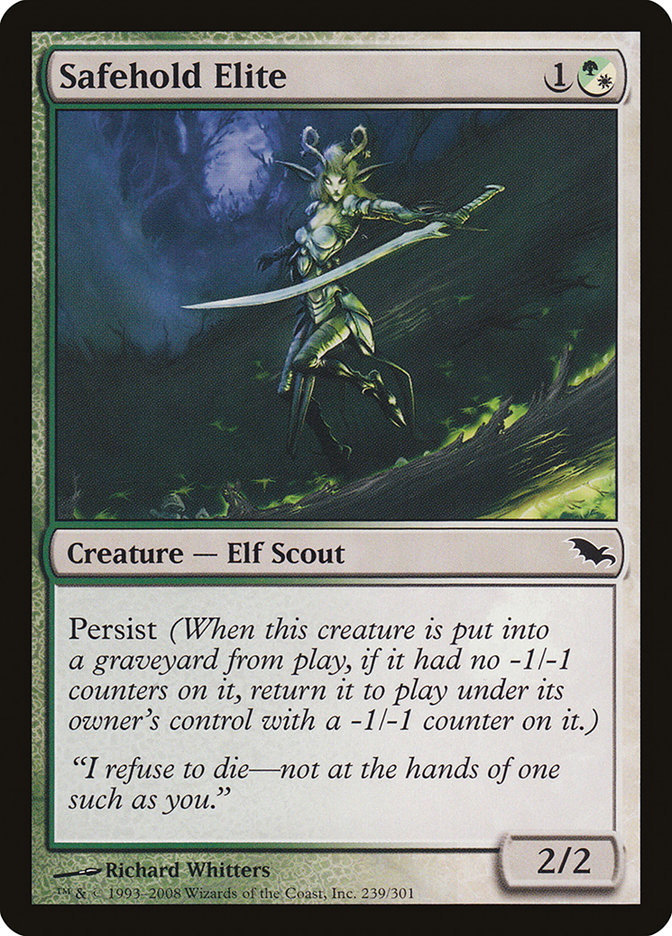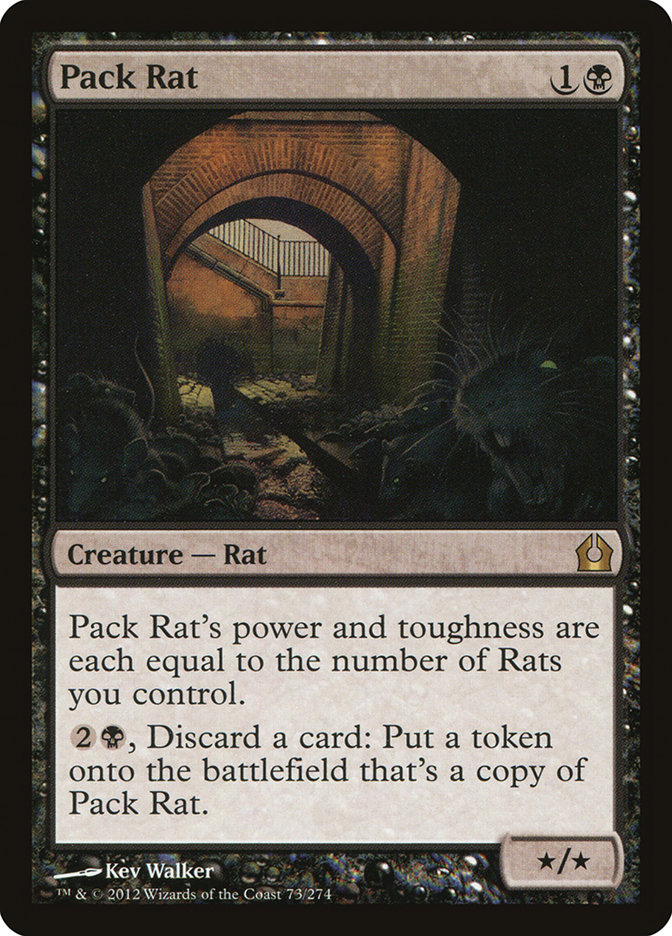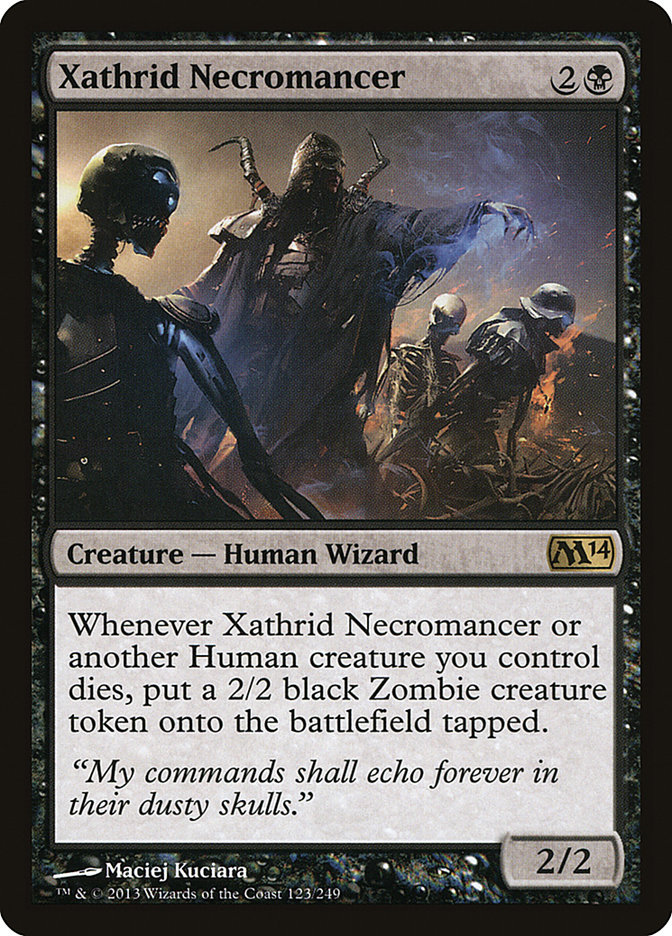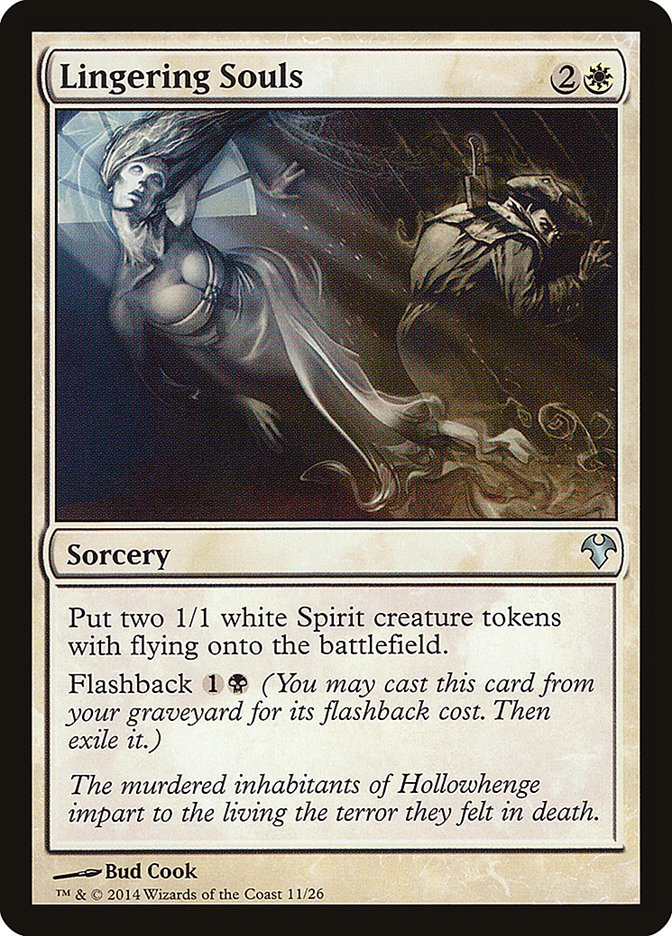Return to the Ranks might not have the tools it needs in Standard, but I think it could bring one of my favorite decks into a prominent position in Modern.
Return to the Ranks is an extremely powerful card–the fact that you have to pay one additional mana for each creature that often costs two additional mana
means you’re already getting a good rate as X increases, but with convoke allowing you to minimize the amount of mana you’re actually playing, you can get
a card that has a much more radical impact on the game than the amount of mana you have available would normally allow.
Return to the Ranks is also the perfect way to establish creature combos where you need several cheap creatures in play at the same time without letting
your opponent break it up. If you’re playing against someone with a lot of removal, playing three Blood Artists might not get you very far, as each one
eats a removal spell and drains the opponent for one, but if you put them all into play at once, the first removal spell will cost your opponent three
life. In the context of the deck as a whole, this can scale radically and the impact shouldn’t be underestimated.
In order to function, the deck needs a way to fill its graveyard, which can be a combination of self-milling, discarding, and sacrificing a lot of cheap
creatures, as well as a plan to actually end the game. The creatures I’m most interested in using with Return to the Ranks are:
This is basically the best. You can play it the same turn that you cast Return to the Ranks, and it functionally doesn’t cost anything because you can
immediately use it to convoke. In fact, with a sac outlet, you can even put it straight into the graveyard and then use the spirit to convoke to get it
back. This is the perfect card to generate as much value as possible at a very low cost. It’s also white and a human, both of which can be assets.
This is a horrible Doomed Traveler. It’s not white, not a human, and the token doesn’t fly. I’m sure that’d I’d play more than four Doomed Travelers
though, and this might be the next best. I prefer it to Young Wolf because after its first life it’s in the graveyard where I can return it, and I have a
token to convoke with. Young Wolf is never both in play and in the graveyard in this way, and I don’t care that much about the fact that Young Wolf becomes
a 2/2.
This is the cheapest sacrifice outlet, I can return it with Return to the Ranks, it’s a nice cheap creature to convoke, and scrying to find more Return to
the Ranks in the mid game, especially if my opponent plays a sweeper, can be very important.
This goes in a slightly different direction, but I like that if I get multiple back with Return to the Ranks, they all see each other, and they’ll all be
pretty big. This is only really interesting if I’m really using the human tribal mechanic, likely with Xathrid Necromancer.
This is the other cheap sac outlet. It can’t convoke, but it also basically can’t be killed, and the ability to threaten a 9/7 haste fairly early is a huge
upside. This has always been a good pairing with Mogg War Marshal, and they’re the primary cards red offers here.
It’s hard for me to imagine building a Return to the Ranks deck without Blood Artist. It seems like the best finisher, and it works perfectly with every
other card in the deck, unless there’s a tribal conflict.
The other obvious sacrifice outlet. This one doesn’t generate as much value on the payoff as Viscera Seer, but it’s nice that it protects itself, that it’s
human, and that it can fight reasonably.
This is a good way to actually end a game. When you’re filling your deck with cheap creatures that don’t really die and then putting about four extra
creatures into play with Return to the Ranks, you can end up with a lot of big elementals pretty quickly. It’s also one of the higher impact cards on its
own, and the deck can have problems with not having enough plays that really matter.
You can sacrifice this immediately to exile a card forever, which stores the Sculler in your graveyard to come back and eat another card if you have a
sacrifice outlet. This helps to make the deck a little more disruptive, which can be important as it’s neither the fastest nor the most powerful deck in
Modern.
This is a nice value card that can help enable big Return to the Ranks plays much faster than you would otherwise be able to make them.
If your goal is to fill the board with creatures, nothing makes tokens at this guy’s rate. It even puts itself in the graveyard for Return to the Ranks.
When using Mogg War Marshal, it’s important that you can really get a lot of value from the tokens it creates.
This doesn’t have any particularly strong synergies with the deck, but you’re not playing many spells and all of them are cheap, and this is likely to
usefully disrupt your opponent. I think it’s mostly off plan unless you’re doing the human tribal stuff, at which point it’s likely one of the best two
mana creatures.
It’s hard to fit enough spells into the deck to make this work, but it’s worth noting that it’s a human that costs two and makes tokens, so there’s a
chance it could work out. It plays particularly well with Lingering Souls and Faithless Looting.
This returns itself, so it’s not necessarily great with Return to the Ranks, but if you’re going through the trouble of filling your graveyard and setting
up sacrifice outlets, it might work very well with the rest of the deck, and it can consistently help pay for convoke.
This is potentially a different way to go with things. Putting Melira and a sac outlet in play at the same time gets you most of the way to an infinite
combo. The question is whether we want Kitchen Finks or Safehold Elite + Blood Artist to finish off the combo. If you go with Safehold Elite + Blood Artist
it becomes a four card combo, but you can put the entire thing into play with Return to the Ranks.
Noteworthy only with Melira, otherwise it’s mostly a bad Young Wolf.
This is going a little deep, but if you have a lot of self mill, you might want to be able to flash back the Return to the Ranks that you mill. Note that
it’s a human.
One way to build the deck is to minimize your sac outlets and make your opponent kill your creatures for you by playing creatures that can actually win the
game if left alone, and then you can get them back once your opponent has gone through the trouble of killing them. It’s also nice that your high end
(Return to the Ranks) has a converted casting cost of two when you reveal it with Dark Confidant. Dark Confidant plays perfectly with Champion of the
Parish as both play toward the “creatures that actually matter” theme. It also plays well with Young Pyromancer as you don’t need to be as focused on
filling your deck with creatures when you’re going this direction. It’s also nice that Dark Confidant can do something powerful that doesn’t rely on the
graveyard.
We’re playing most of these weak creatures just so they can end up in the graveyard. If we discard them to Pack Rat, they still end up there, but we get a
rat on the front side. Also, it’s strong in the late game when we return it, we’re not doing much else with extra lands, and it can easily beat graveyard
hate by itself.
The other big incentive to care about humans. You can’t return this to the ranks, but it’s awesome to have in play when you have creatures moving into and
out of your graveyard.
This isn’t exactly a creature, but it basically is, and it’s likely an important piece of the puzzle. Lingering Souls has always been great in this kind of
deck and in any deck with Blood Artist.
A little expensive, but always worth keeping in mind. It’s a sac outlet, but more importantly, it offers a way to end the game quickly that doesn’t rely on
the graveyard and generally attacks from a different angle than the rest of the deck.
There are a lot of different directions we can go here. I think the deck basically has to be Black and White as Return to the Ranks is White and every
sacrifice outlet is Black. I’m skeptical about playing four colors, so I think we basically have to choose between Red and Green. Both offer a similar
number of rewards as far as I can tell.
Let’s look at some builds:
Creatures (32)
- 4 Dark Confidant
- 3 Tidehollow Sculler
- 3 Viscera Seer
- 4 Champion of the Parish
- 4 Doomed Traveler
- 1 Thalia, Guardian of Thraben
- 4 Blood Artist
- 4 Cartel Aristocrat
- 4 Xathrid Necromancer
- 1 Athreos, God of Passage
Lands (19)
Spells (9)
Sideboard

Being only Black and White means that I can’t sideboard Abrupt Decay, which means I’m less likely to be able to fight against cards that attack my
graveyard. This isn’t that big of a problem because the deck is much less focused on the graveyard than some builds. Rest in Peace will be very good
against me, but it’s still very much a beatable card.
I don’t think Athreos, God of Passage is a very strong card, but I’m curious how well it plays with sacrifice outlets and cheap creatures that would love
to die and come back over and over. I’m playing a lot of non-humans for a tribal human deck: Viscera Seer, Tidehollow Sculler, and Blood Artist, but I also
just have an extremely high creature count. I’m playing Tidehollow Sculler in a slot that would otherwise be Thoughtseize (not a human) for example. I have
21 humans, which should be enough to be happy with Champion of the Parish. It’s possible that one or two Viscera Seers would be better as Soldier of the
Pantheon.
I also have very little removal in the maindeck. The plan is to overwhelm other creature decks, but this leaves me very vulnerable to creature-based combo
and Scavenging Ooze. It’s possible that Orzhov Charm would be better so that it could be a threat against creatureless decks.
Creatures (25)
- 2 Greater Gargadon
- 4 Mogg War Marshal
- 4 Tidehollow Sculler
- 1 Viscera Seer
- 4 Doomed Traveler
- 2 Falkenrath Aristocrat
- 4 Blood Artist
- 4 Cartel Aristocrat
Planeswalkers (1)
Lands (19)
Spells (15)

I’m a little worried about the lack of one-drops in this deck, but I’m trying to make sure to keep the power level up. Falkenrath Aristocrat and Greater
Gargadon give me some heavy hitters in the maindeck, and Sorin, Lord of Innistrad can speed up the clock on my tokens if I can’t combo my opponent out with
Blood Artist.
After sideboarding, I can focus more on the token plan with Intangible Virtue and Sorin, Lord of Innistrad coming in as ways to increase the power of my
non-graveyard gameplan.
Creatures (30)
- 4 Tidehollow Sculler
- 2 Tukatongue Thallid
- 4 Viscera Seer
- 4 Doomed Traveler
- 4 Blood Artist
- 4 Cartel Aristocrat
- 4 Voice of Resurgence
- 4 Satyr Wayfinder
Lands (20)
Spells (10)
Sideboard

This deck is the most focused on curving out, loading my graveyard, and comboing out with Blood Artist. Voice of Resurgence is plan B, and Lingering Souls
is Plan C. Satyr Wayfinder works well with Gavony Township and Lingering Souls. Interaction in game 1 is fully minimized in favor of synergy with the
disruptive cards in the sideboard.
Access to Qasali Pridemage and Abrupt Decay allow be to fight graveyard hate after sideboard, which allows me to continue to use the graveyard to win.
Creatures (21)
- 1 Greater Gargadon
- 3 Bloodghast
- 3 Viscera Seer
- 4 Doomed Traveler
- 4 Blood Artist
- 2 Cartel Aristocrat
- 4 Young Pyromancer
Lands (19)
Spells (20)
- 3 Lightning Bolt
- 2 Plains
- 1 Mountain
- 1 Blasting Station
- 1 Intangible Virtue
- 4 Faithless Looting
- 4 Lingering Souls
- 4 Return to the Ranks
Sideboard

This deck is based on the spirit of my zombie deck in Legacy. I don’t have a ton of spells for Young Pyromancer, but since eight of them have Flashback, I
think it’s sufficient. I’m not sure what the best mix of sacrifice outlets is, and I could easily see wanting more Blasting Stations. This build is likely
the most reliant on its graveyard while having the least ability to protect it, but Faithless Looting might work really well here. I worry somewhat about
not having enough really high impact creatures to Return to the Ranks, but I’m not sure how hard I really have to work to make it good once I have Blood
Artist in a shell that supports it.
That covers several fairly different combinations, but doesn’t touch on some of the options, like Melira combo or Pack Rat that I certainly don’t mean to
dismiss.
I think there’s something here somewhere, and I intend to put some work into it. The primary concern is that I’m playing a deck that’s best when it’s
grinding, but I don’t have a lot of ways to attack my opponent’s gameplan. This means I’m well positioned against spot removal, but if my opponent is
planning to ignore me and combo off, it may not be terribly difficult to trump my strategy. Fortunately, playing black means that I can always have access
to discard, so the question is mostly how much the format forces me to have access to that in game 1 and in my sideboard as separate questions. (The first
is answered by figuring out how much of the field I need discard against, and the second by how much discard is required to actually beat combo decks.)

